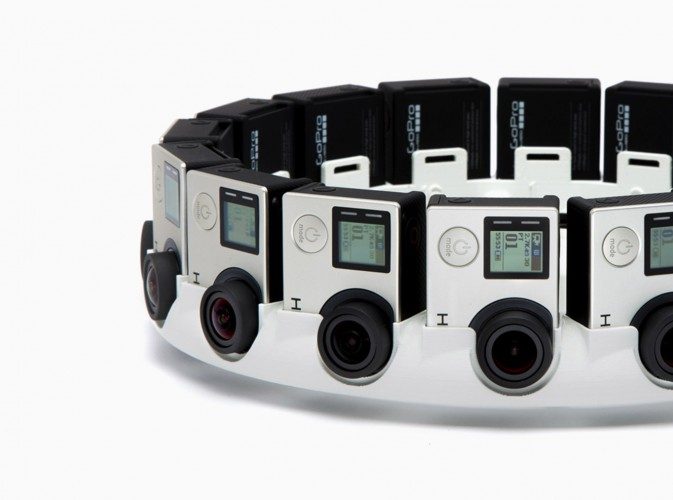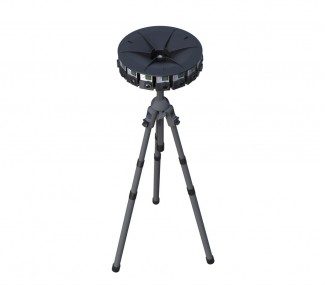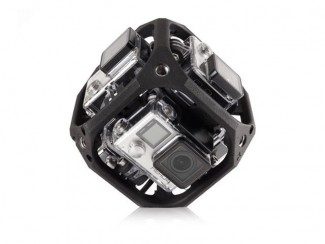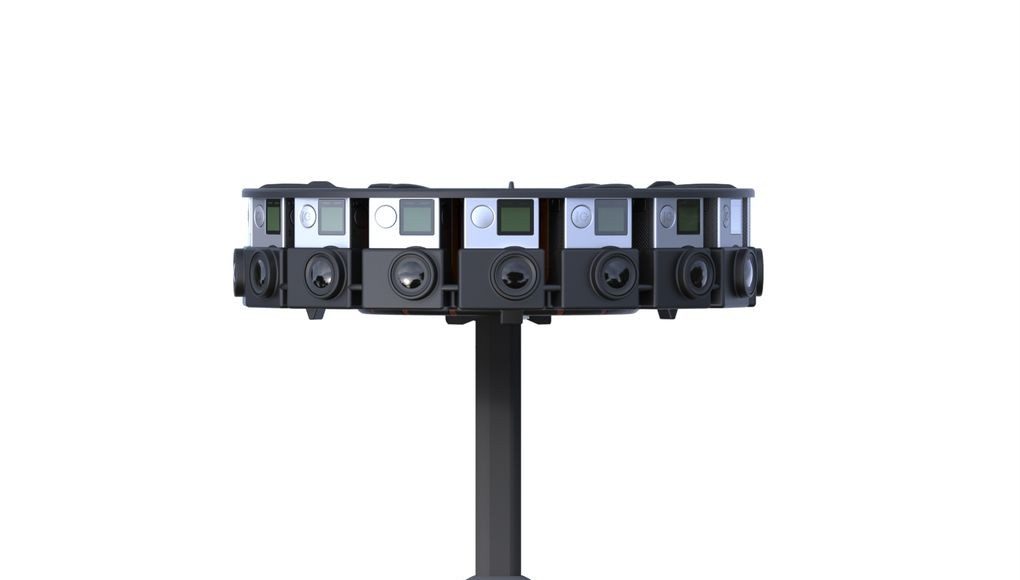GoPro, the biggest name in rugged ‘action’ video cameras, is ready to jump into the VR space with a 16 camera array based on Google’s new ‘Jump’ design for 360 degree VR video.
Just three years ago, the idea that big established brands in the camera industry would actively tackle the complexities of 360 degree video for VR would have been unthinkable. Now, in the wake of major companies clamouring for a slice of the VR pie, everyone’s at it. GoPro however, despite their cameras appearing in various third-party 360 video solutions, had until now yet to enter the fray.
At the opening keynote of Google I/O 2015 today, Clay Bavor announced Google’s ‘Jump’ program, aimed at the effective capture and sharing of 3D VR video. As part of the announcement, Google outlined its partnership with GoPro to produce a camera array comprising 16 GoPro cameras. The unit will allow the capture and multi-camera syncing of videos all powered by a ‘long life’ battery power source, making it entirely portable—well, as much as a camera of this size can be.
See Also: Google ‘Jump’ is an Open VR Camera Design with “Seamless” Stitching Solution and YouTube Playback

Just yesterday, company CEO Nick Woodman, speaking at Re/Code’s Code Conference, said the company had been working on their entrance into the VR video market for some time. To prove his point, they revealed their a new six-camera, spherical video solution, designed to capture raw footage capable of being stitched together to form content viewable inside a VR headset.
 Whilst GoPro is of course well known for its camera hardware however, stitching and processing is an emerging and difficult field, one that the company had little experience in. This was remedied earlier in the year, when GoPro acquired image processing specialists Kolor. Kolor has made good headway in providing end-to-end solutions for 360 video with their Autopano stitching software and Kolor Eyes video player (including Oculus Rift support).
Whilst GoPro is of course well known for its camera hardware however, stitching and processing is an emerging and difficult field, one that the company had little experience in. This was remedied earlier in the year, when GoPro acquired image processing specialists Kolor. Kolor has made good headway in providing end-to-end solutions for 360 video with their Autopano stitching software and Kolor Eyes video player (including Oculus Rift support).

GoPro’s smaller array is a cube-shaped device comprising six Hero 4 cameras, video from which can then be combined and stitched to create a single 6k spherical view of a scene. The resulting content can then be played back on VR headsets such as the Oculus Rift or indeed Google Cardboard. Note however that the rig is only capable of capturing monoscopic content.
GoPro’s 16 camera big brother on the other hand is yet to receive official specifications, but images released seem to show this monster array is based around Hero 4 cameras too. The device will apparently be available to YouTube content “creators” via an early access program designed to kickstart creative content production to be shared via Google’s ecosystem.
Woodman said the company had been eyeing virtual reality for some time but once big players like Microsoft, Facebook, and Google entered the market it was clear this was a space they needed to occupy.
Pricing for the new ‘prosumer’ targeted 6-camera device hasn’t yet been revealed, but GoPro expects it to be available later this year. No release date or pricing for 16-camera ‘Jump’ array is yet known.







